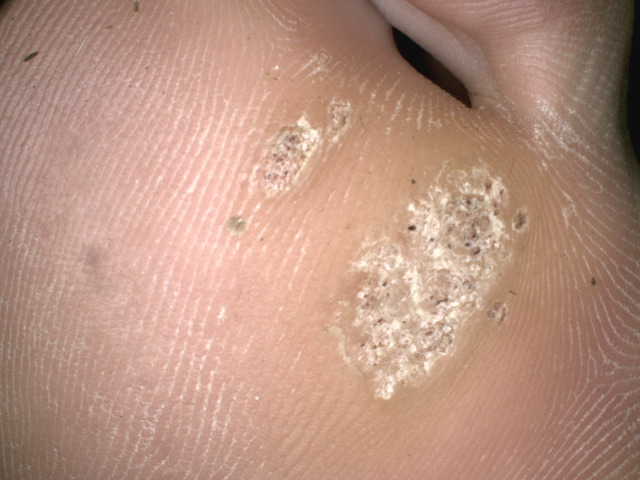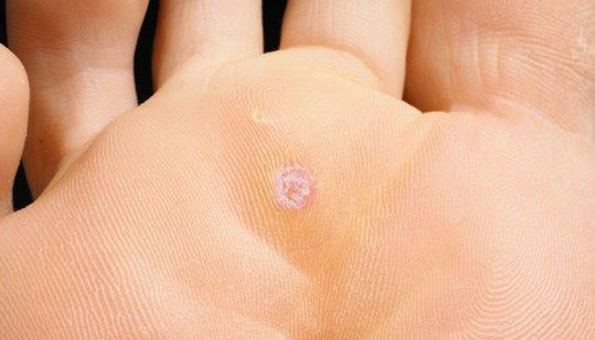Verrucae are contagious but generally harmless, tending to eventually go away on their own although this can take months or even years.
However they can become painful if they develop over a weight bearing area and if they develop callus over the top. Some strains of the virus can spread quickly, can look unsightly and cause distress for some people.
How Do I Treat A Verruca?
Various treatment options are available and this is best discussed with a registered podiatrist. It may simply be best to leave the warts to go on their own unless they are causing pain and embarrassment.
There are many ‘wives tales’ treatments such as using banana skin, but these are not usually recommended due to lack of clinical evidence. Care should be taken with home treatments so as to not damage surrounding healthy skin which can cause pain, infection and scarring.
It is also useful to get a diagnosis of verruca by a podiatrist as it has been known that people have treated what they think is a verruca when in fact it was a corn, and treatment and management for these can differ.
- often described as cauliflower in appearance
- usually flat
- often white with black dots
- can be singular or many
- can have callus over it
- may be painful
- can be unsightly
What Are They?
Verrucae are warts that commonly occur on the bottom of the feet or around the toes.
They are very common and are caused by the Human Papilloma Virus (HPV) which is contagious.

Verrucae on plantar surface of foot – photo credit britishskinfoundation.org.uk
Who Gets Them?
They can be passed on from person to person through close skin contact or by contact with contaminated objects or surfaces, such as:
- towels
- shoes and socks
- areas surrounding swimming pools
- floors of communal changing areas
After becoming infected, it can take weeks or even months for a verruca to appear. Verrucae are most common in children to young adults, although anyone can get them. It is possible to develop immunity against the virus over time, but most people remain susceptible.
Can I Prevent Verrucae?
Warts and verrucae are contagious however you may help to prevent catching them by keeping your skin in a healthy condition, wearing flip-flops in communal areas and not sharing towels, shoes or socks.
Try to avoid touching or scratching any verrucae as it may spread into a cluster of warts.
If you have verrucae, swim socks can be worn to help prevent passing on the virus. However, the current standing is that they are not considered necessary.
The British Swimming Organisation state that swim socks should be discouraged and advise to just cover with a waterproof plaster:
britishswimming.org/members-resources/athletes-and-parents/understanding-verrucas

